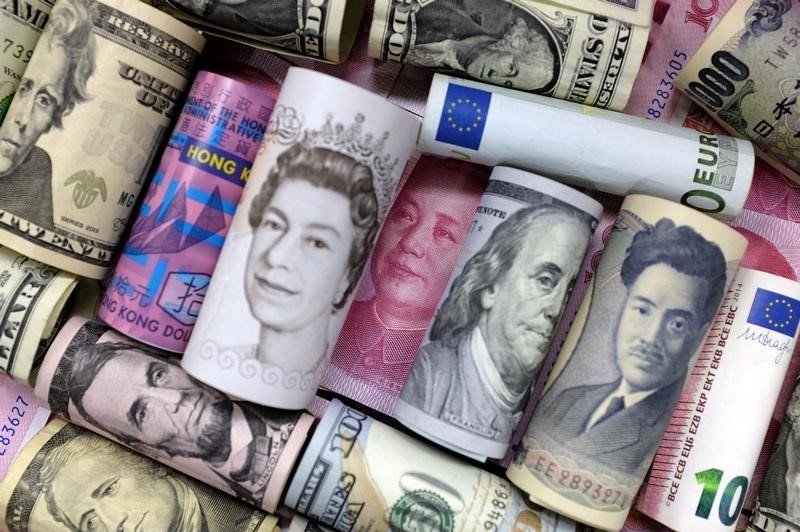Investing.com - The U.S. dollar fell against major rivals on Tuesday, dropping for a third-consecutive session, as signs of cooling inflation bolstered market expectations that the Federal Reserve will cut rates this year.
The U.S. dollar index, which measures the greenback’s strength against a trade-weighted basket of six major currencies, fell 0.3% to 97.34 by 11:10AM ET (15:10 GMT).
Policymakers kicked off a two-day meeting on Tuesday that is widely expected to result in no changes to interest rates when the decision is announced a day later.
The Fed changed its tune this year as concerns over global growth and weak inflation caused it to retreat from prior forecasts that it would hike rates twice in 2019 and be “patient” with further tightening.
But markets have gone further, pricing in more than a 60% chance that the Fed will in fact cut interest rates in December, according to Investing.com's Fed Rate Monitor Tool.
“With the U.S. economy experiencing a Goldilocks period of firm growth and benign inflation, the focus this coming Wednesday will be on how far the Fed pushes back against the market view that they will be forced to cut rates later this year,” James Knightley, chief international economist at ING, said in a preview to the Fed decision.
The dollar began its current stretch of declines last Friday amid signs of weakening price pressures. Inflation data released with first-quarter growth numbers last week and the core personal consumption expenditures price index for March - generally considered the Fed’s preferred inflation measure - on Monday have seen the dollar retreat from near two-year highs.
In currency pairs, the euro traded higher against the dollar as better-than-expected economic growth in the euro zone boosted the single currency.
Cable got a boost on reports that cross-party talks between ruling Conservatives and the opposition Labour Party over Brexit, the U.K.’s departure from the European Union are progressing positively. Reuters cited one Labour official as saying that both sides were working on the “nuts and bolts” of an agreement.
In Asia, Tokyo markets are closed this week for a holiday, which analysts say exacerbates volatility due to the lack of liquidity, but the yen still managed to strengthen to three-week highs.
An unexpected drop in China’s factory activity outweighed the generalized weakness in the greenback, leaving the pair unchanged on the day, although the data did force a sustained drop in the Aussie dollar.
